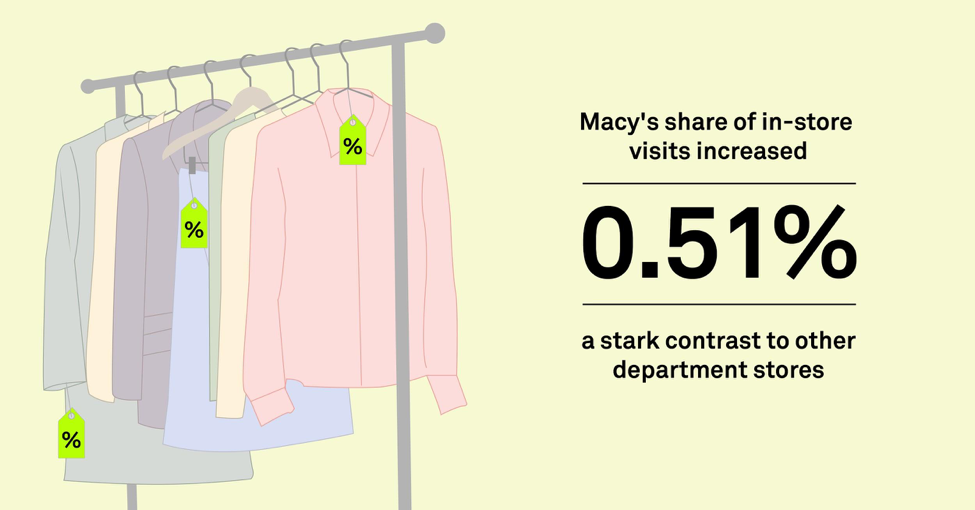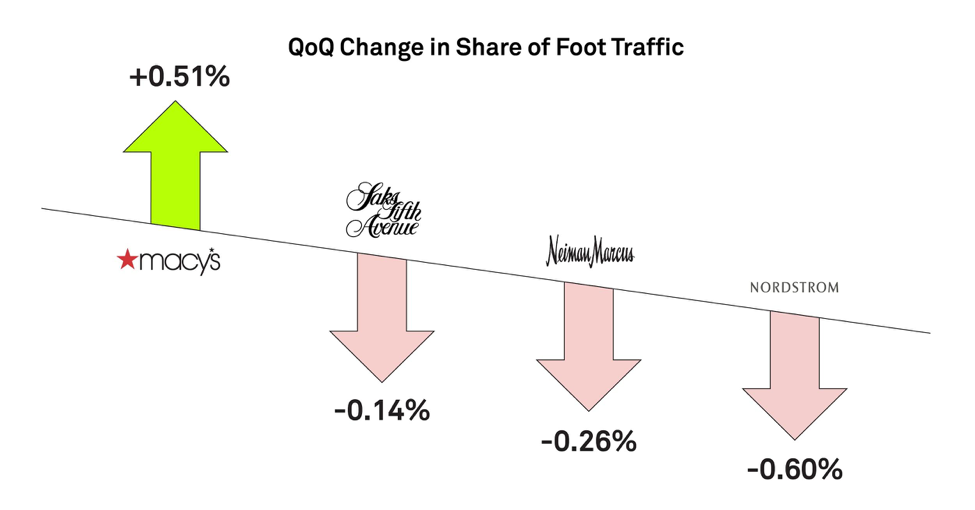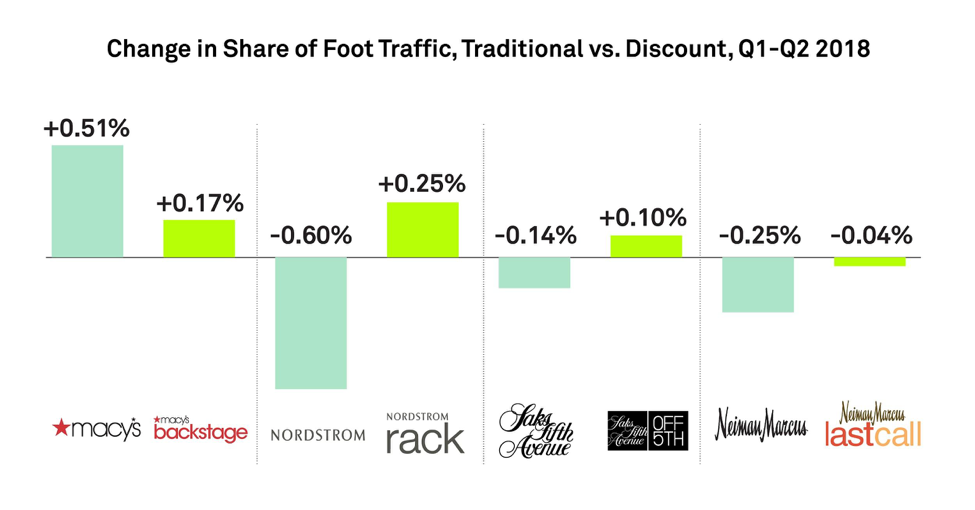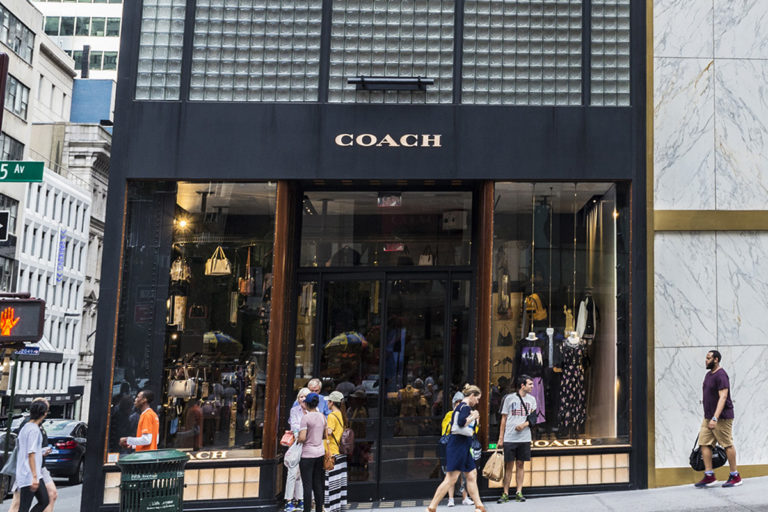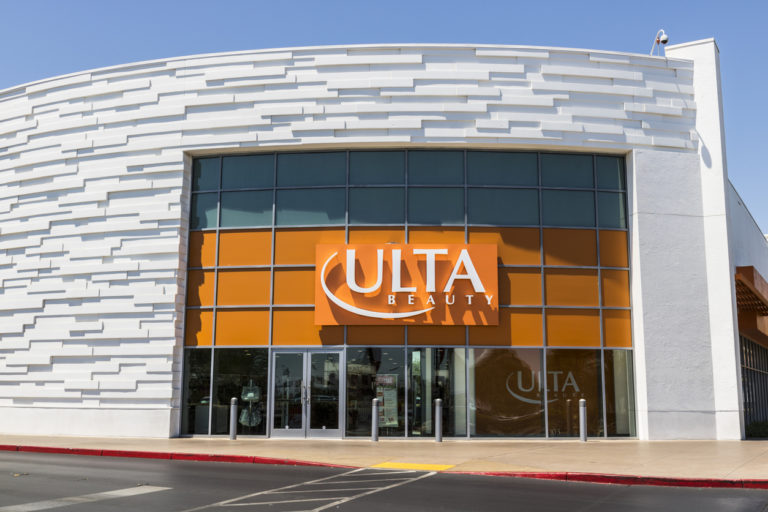Conventional wisdom held that department stores should never undercut themselves with their own discount brands, but conventional wisdom is for the birds these days. In fact, GroundTruth’s Q2 Retail Foot Traffic report showed that discount brands are actually gaining share from their higher-end counterparts. While some stores have been slow to ride this wave of discount shopping, others are leveraging this trend to drive store visits.
Nowhere is this more evident than at Macy’s. Where other department stores, namely Neiman Marcus, Saks Fifth Avenue, and Nordstrom, run their discount stores in separate locations and under distinct names (i.e. Neiman Marcus Last Call, Saks Off 5th and Nordstrom Rack), Macy’s has taken a different, innovative approach to discount sales—one that has paid off nicely.
A Miracle on 34th Street (Or Just a Really Good Business Plan)
Macy’s was late to the off-price game, inaugurating its first Macy’s Backstage outlet store in 2015 (by way of comparison, Barney’s Warehouse opened in 1970 and Nordstrom Rack launched in 1973). The following year, Macy’s changed its strategy, establishing Backstage sections in existing Macy’s department stores. The brand has been expanding the number of Backstage sections ever since, and its success has surprised even its top executives.
According to our analysis of second-quarter foot traffic, Macy’s share of in-store visits increased 0.51%, a stark contrast to other department stores, such as Saks Fifth Avenue, Neiman Marcus, and Nordstrom, which all saw declines. The company reported that stores with Backstage sections saw sales increases on an average of 7% over stores without Backstage departments. Unsurprisingly, Macy’s plans to add 100 in-store Backstage sections this year, roughly tripling the number of locations.
The strong performance is all the more impressive given where Macy’s was coming from. Up until the final quarter of 2017, Macy’s, like several other U.S. department store brands, had been struggling, and closed more than 100 locations since 2015. Since the last quarter of 2017, though, Macy’s has been showing growth—thanks, at least in part, to its new off-price retailing strategy.
Discounts Here, There and Everywhere
In the past decade, as the landscape grew more bleak in the brick-and-mortar retail sector, outlet chains such as T.J. Maxx, Marshalls, and Ross were the rare bright spots. Department stores could no longer ignore the discount apparel boom and moved to shore up their bottom lines by capturing their own shares of the off-price action.
With the rise of a more budget-conscious consumer and an increased emphasis on convenience, even brands that have been in the off-price business for decades are changing their approach. It used to be that outlet stores were located in suburban or rural areas, but now increasing numbers of discount outlets are moving to cities. In uber-urban Manhattan, Nordstrom Rack, Saks Off 5th, and Neiman Marcus Last Call all compete for off-price shoppers.
And these shifts are paying off. GroundTruth’s location data shows that off-price brands such as Nordstrom Rack and Saks Off 5th gained a 0.5 % share of foot traffic over their traditional counterparts between the first and second quarters of 2018. With the exception of Macy’s, all of the off-price spin off brands outperformed their parent brands in their quarter-over-quarter share of foot traffic, with Nordstrom Rack seeing the largest increase.
Off-price outlets are clearly an asset to their full-price parents, but with the breakout success of Macy’s Backstage strategy, the discount space may well be in for yet another makeover.

